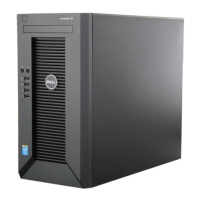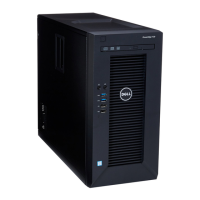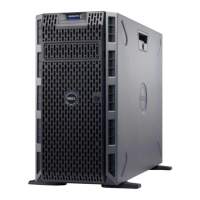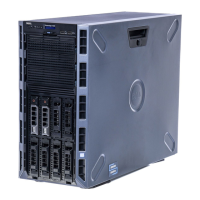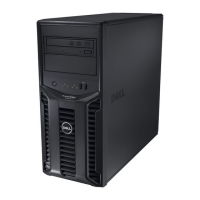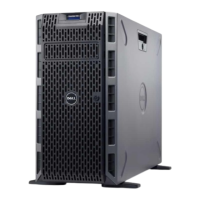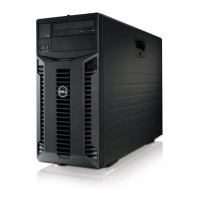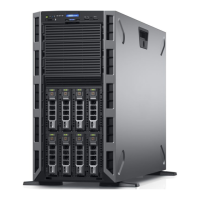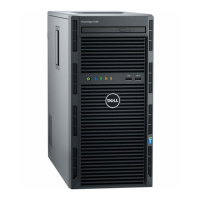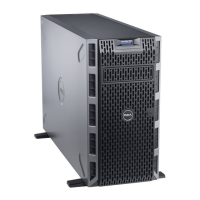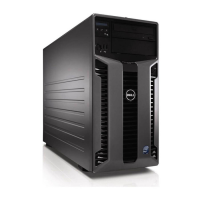Dell
PowerEdge T710 Technical Guide 28
7 Memory
7.1 Overview
The Dell™ PowerEdge™ T710 uses DDR3 memory providing a high performance, high-speed memory
interface capable of low latency response and high throughput. T710 supports Registered ECC DDR3
DIMMs (RDIMM) or Unbuffered ECC DDR3 DIMMs (UDIMM).
The DDR3 memory interface consists of three channels. The maximum number of supported DIMMs is
dependent on the type of DIMM used.
Maximum Configuration by DIMM Type Table 13.
Single- or dual-rank RDIMM
3 per channel per processor (18 total)
2 per channel per processor (12 total)
Single- or dual-rank UDIMM
2 per channel per processor (12 total)
Key features of the T710 memory system include:
Registered (RDIMM) and Unbuffered (UDIMM) DDR3 technology
Each channel carries 64 data and eight ECC bits
Support for up to 192 GB of RDIMM memory (twelve 16 GB RDIMMs)
Support for up to 24 GB of UDIMM memory (twelve 2 GB UDIMMs)
Support for 1333 MT/s single- and dual-rank DIMMs
Support for 1066 MT/s quad-rank DIMMs
Support for 1.35V low voltage (LV) DIMMs
Single DIMM configuration with DIMM at socket DIMM A1
Support ODT (On Die Termination)
Clock gating (CKE) to conserve power when DIMMs are not accessed
DIMMs will enter a low power self-refresh mode
I
2
C access to SPD EEPROM and thermal sensors
Single Bit Error Correction
SDDC (Single Device Data Correction, x4 or x8 devices)
Multi Bit Error Detection
Support for Closed Loop Thermal Management on RDIMMs and UDIMMs
Support for Advanced ECC mode
Support for Memory Optimized mode
Support for Memory Mirroring
Support for Memory Sparing with 5600 series processors
7.2 DIMM Slots
T710 is equipped with 18 DIMM slots on the motherboard. No memory risers are utilized. Nine DIMM
slots are associated with each processor. Both processors must be populated in order to utilize all 18
DIMM slots.
7.3 DIMMs Supported
The T710 DDR3 interface supports 2 GB, 4 GB, 8 GB, or 16 GB RDIMMs and 1 GB or 2 GB UDIMMs.
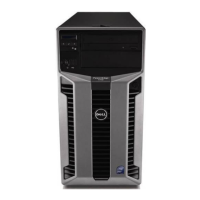
